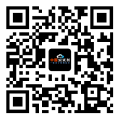详细说明
Species Reactivity
Human
Specificity
Detects endogenous human TRAF-4. In Western blots, this antibody does not cross-react with rhTRAF-1, -2, -3, -5, or -6 in Western blots.
Source
Monoclonal Rat IgG 2A Clone # 433709
Purification
Protein A or G purified from hybridoma culture supernatant
Immunogen
E. coli-derived recombinant human TRAF-4
Met1-Ser470
Accession # Q9BUZ4Formulation
Lyophilized from a 0.2 μm filtered solution in PBS with Trehalose. *Small pack size (SP) is supplied as a 0.2 µm filtered solution in PBS.
Label
Unconjugated
Applications
Recommended
ConcentrationSample
Western Blot
2.5 µg/mL
See below
Please Note: Optimal dilutions should be determined by each laboratory for each application. are available in the Technical Information section on our website.
Data Examples
Western Blot | Detection of Human TRAF‑4 by Western Blot. Western blot shows lysates of Raji human Burkitt's lymphoma cell line and K562 human chronic myelogenous leukemia cell line. PVDF membrane was probed with 2.5 µg/mL of Human TRAF‑4 Monoclonal Antibody (Catalog # MAB3279) followed by HRP-conjugated Anti-Rat IgG Secondary Antibody (Catalog # ). A specific band was detected for TRAF‑4 at approximately 53 kDa (as indicated). This experiment was conducted under reducing conditions and using . |
Preparation and Storage
Reconstitution
Reconstitute at 0.5 mg/mL in sterile PBS.
Shipping
The product is shipped at ambient temperature. Upon receipt, store it immediately at the temperature recommended below. *Small pack size (SP) is shipped with polar packs. Upon receipt, store it immediately at -20 to -70 °C
Stability & Storage
Use a manual defrost freezer and avoid repeated freeze-thaw cycles.
12 months from date of receipt, -20 to -70 °C as supplied.
1 month, 2 to 8 °C under sterile conditions after reconstitution.
6 months, -20 to -70 °C under sterile conditions after reconstitution.
Background: TRAF-4
Tumor Necrosis Factor (TNF) Receptor-Associated Factors (TRAFs) are a family of adaptor proteins that interact with a wide range of cell surface receptors and participate in the regulation of cell survival, proliferation, differentiation, and stress response. TRAFs were identified by their ability to form complexes with TNF receptor superfamily members but more recently are reported to also bind to Toll/IL-1 receptor family members and mediate cellular signaling. Seven members of the TRAF family have been identified. All TRAF proteins have a homologous C-terminal TRAF domain that can bind the cytoplasmic domain of receptors as well as other TRAFs. TRAFs 2‑6 have N-terminal RING and zinc finger domains that are involved in signaling downstream events. TRAF-4, also known as CART1 and MLN62, is a 470 amino acid, 53 kDa protein. A second isoform has been identified and lacks amino acids 157‑428. TRAF-4 is unique member of the TRAF family that localizes to the nucleus and does not regulate signaling through cell surface receptors. TRAF-4 is highly expressed in human breast carcinomas and during embryogenisis.
Long Name:
TNF Receptor-Associated Factor 4
Entrez Gene IDs:
9618 (Human); 22032 (Mouse)
Alternate Names:
CART1; CART1RING finger protein 83; Cysteine-rich domain associated with RING and Traf domains protein 1; Metastatic lymph node gene 62 protein; MLN 62; MLN62; MLN62cysteine-rich domain associated with ring and TRAF domain; RNF83malignant 62; TNF receptor-associated factor 4; TRAF4; TRAF-4; tumor necrosis receptor-associated factor 4A










 粤公网安备44196802000105号
粤公网安备44196802000105号